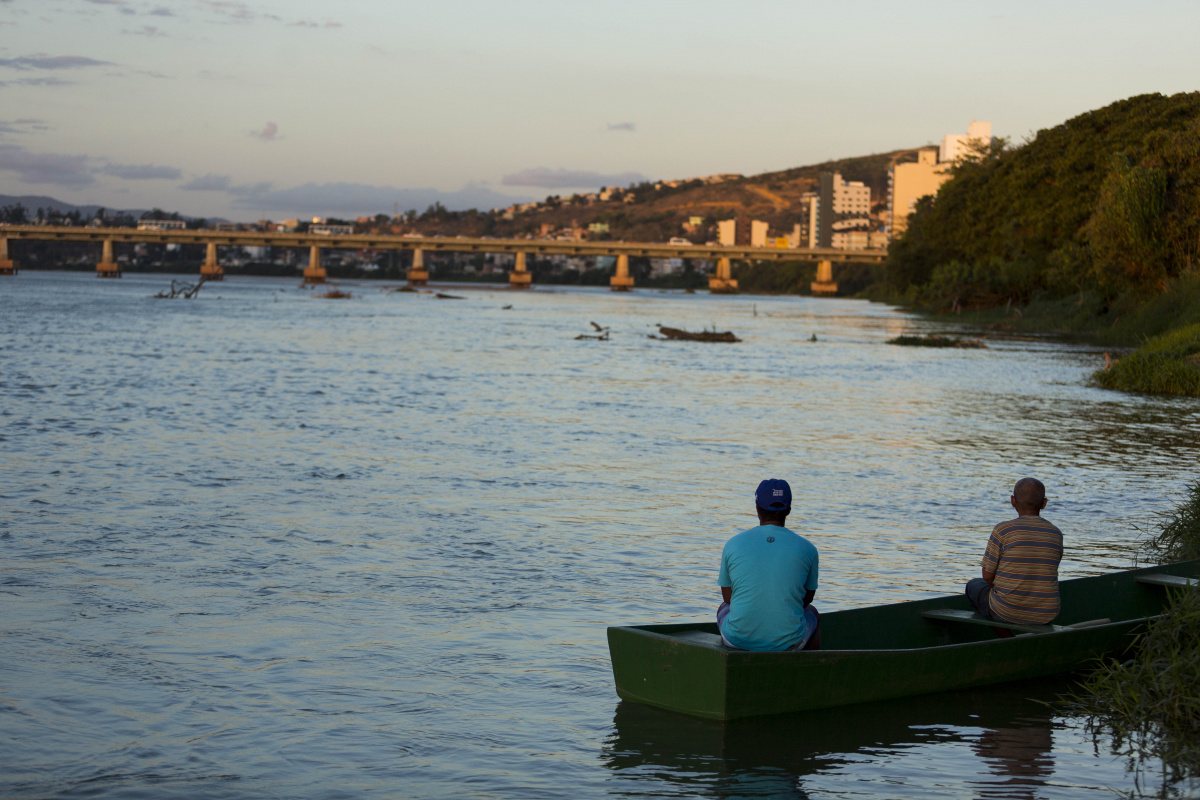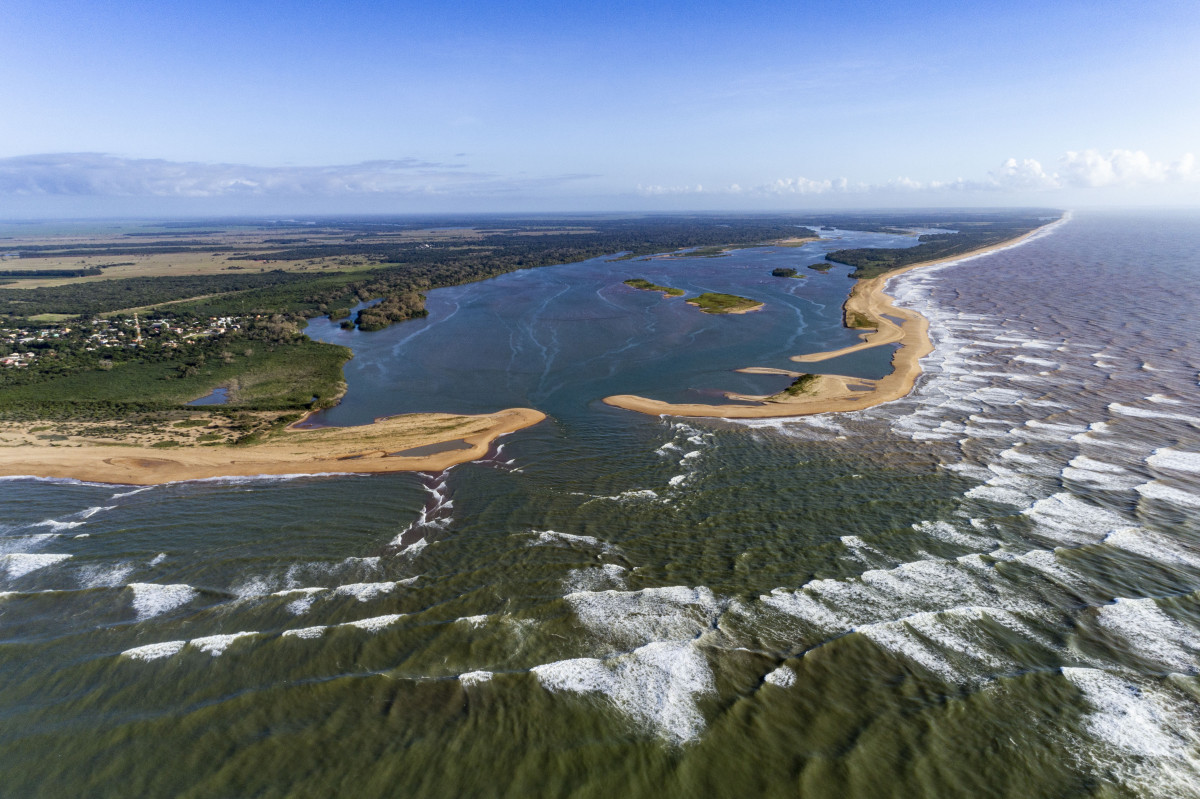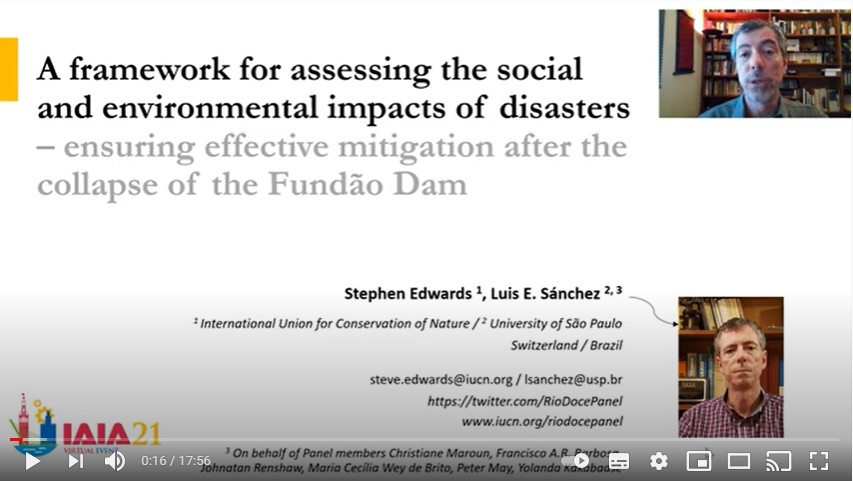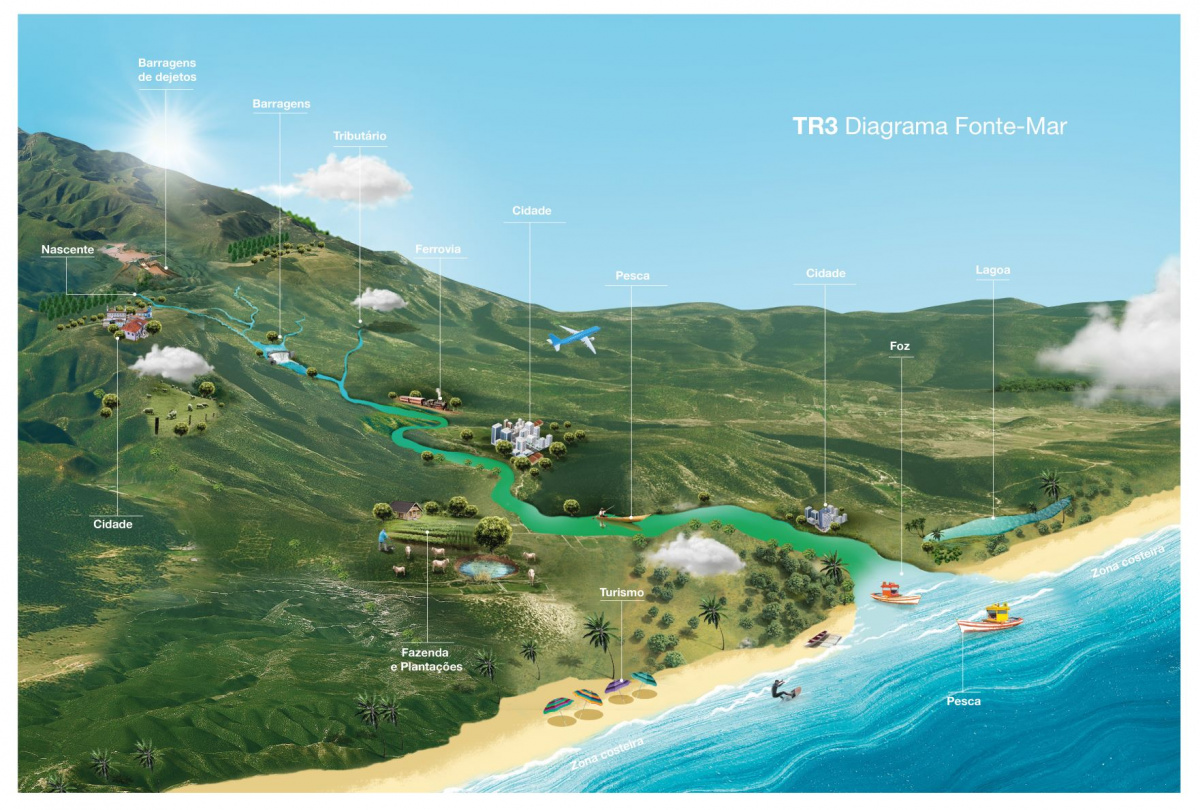Panel recommends actions to benefit long-term governance in the recovery of the Rio Doce region
The Rio Doce Panel advocates building a common vision for the long-term governance of the watershed after the Fundão dam failure

Photo: Nitro
The new Rio Doce Panel study From restoration to responsive governance: Rio Doce after the Fundão dam failure, released on August 11, presents a key assessment to encourage participatory governance in the region affected by the disaster in Mariana through investments made to repair the Rio Doce watershed and the associated coastal area.
When the Fundão tailings dam collapsed on 5 November 2015, a wave of mud swept down the river to the sea, causing 19 deaths, destroying villages and riparian vegetation, scraping off river sediments and impacting the lives of thousands of people.
Drawing on national and international examples, the study shows how restoration actions can be directed by the Renova Foundation and the Inter-federative Committee (IFC) to benefit permanent institutions such as the Rio Doce Watershed Committee (CBH-Doce). Three key factors were listed for an efficient and responsive approach: social participation and the capacity for collaboration among stakeholders; transparency and effective communication of reparation actions; and sufficient funds to continue the plans and programmes after remediation efforts come to an end.
The study was prepared based on an assessment of the governance structure put in place to execute and monitor the 42 programmes meant to repair the impacts of the disaster and restore the affected watershed and its coastal and marine areas, as agreed upon in the Transaction and Adjustment of Conduct Agreement (Termo de Transação e Ajustamento de Conduta, TTAC) and in contrast to the region's long-term governance. In its assessment, the Panel finds that various reparation programmes overlap with programmes carried out by permanent institutions. Examples include efforts to leverage basic sanitation, water monitoring actions and spring recovery. Efforts are also needed to leverage the effective participation of the population - especially the people directly affected by the disaster - in the discussions about TTAC programmes. The panel also highlights the importance of the Rio Doce Watershed Committee as a key institution that could play an even greater role in restoration, as well as the need to improve communication and dissemination of information on the measures and results of restoration efforts in order to promote social participation. Another key aspect of the study's findings is the need to define a strategy for transitioning programmes and projects once the restoration work is complete.
Based on these findings, the Rio Doce Panel issues four recommendations:
A COMMON VISION FOR THE FUTURE OF RIO DOCE
The 1st recommendation is the need to achieve a consensus regarding a long-term vision for the Rio Doce region from source-to-sea. This requires joint action by the institutions involved in restoring the region and the definition of key points for the sustainable future of ongoing actions. As such, Renova Foundation and the IFC must work together with community organisations, NGOs, local governments, universities, the CBH-Doce and other relevant stakeholders to increase the participation of all those involved and design a long-term proposal. The methodology for effective community participation can be based on the premises of the new Term of Conduct Adjustment (Termo de Ajustamento de Conduta - Governança, or TAC-GOV), signed in 2018 to make people's participation more efficient, but which has not yet been fully implemented.
THINKING ABOUT PROGRAMME CONTINUITY
In this recommendation, the Panel draws attention to the preparation of a plan for when the Renova Foundation is no longer involved. Once the programmes are concluded, their continuity must be ensured to avoid backtracking on the progress made thus far. It is, therefore, necessary to determine which priority programmes should be continued, involve stakeholders, ensure the necessary funds and engage local communities in monitoring both the restoration processes and its results.
INFORMATION AND DATA REPOSITORY
The study's 3rd recommendation refers to the need to create one or more repositories for data and information gathered in the region by restoration programmes under the TTAC. The suggestion is that a robust strategy be developed to systematise, maintain and update the knowledge generated in the context of the actions carried out across the restoration effort, ensuring it is stored not only for the purposes of research and future work, but also to make the initiative more transparent.
ENGAGE THE RIO DOCE WATERSHED COMMITTEE
The 4th recommendation includes suggestions to further involve the Rio Doce Watershed Committee in restoration efforts, which would be a way to guarantee the participation of the various sectors of society in the efforts to make the programmes sustainable in the long-term.
Suggestions include aligning restoration efforts with the Integrated Water Resources Plan for the Rio Doce Watershed, currently under review, and supporting the resumption of the CBH-Doce's water quality bulletins, with clear, accessible and easy-to-understand information for the general population; and support the integration of coastal area management into CBH-Doce's activities, aiming to incorporate this area into the development plans for the watershed.
See the full paper by the Rio Doce Panel here: https://doi.org/10.2305/IUCN.CH.2021.14.en



